Pizza, beer and revenge
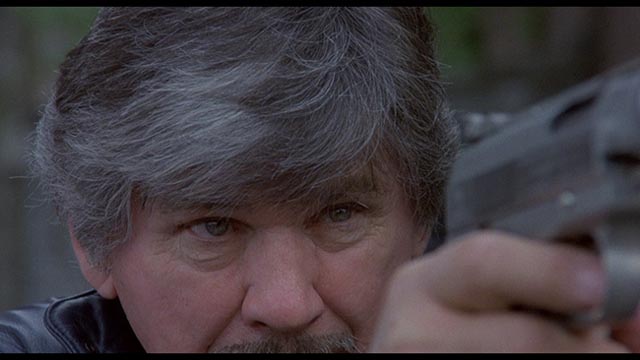
My friend Steve and I recently got together for an evening of pizza, beer and revenge … and indulged to excess on all three counts. The occasion was my purchase of the MGM/20th Century Fox Bronson Triple Threat Collection Blu-ray set. It was a long evening of, to be frank, diminishing cinematic returns. The set consists of the first three sequels to Michael Winner’s notorious box-office hit Death Wish (1974) – no doubt it was fortunate for us that the fourth and final sequel wasn’t included.
By the time he made Death Wish, Michael Winner was already getting little respect from the critics despite several good and more-than-good movies to his credit; but that critical disdain was pretty much universal after this particular movie came out. Not that Winner seemed to care. He continued to make a film every year or two for the following two-and-a-half decades, ending with a comedy variation on Death Wish in 1998 before retiring to devote himself to restaurant criticism.
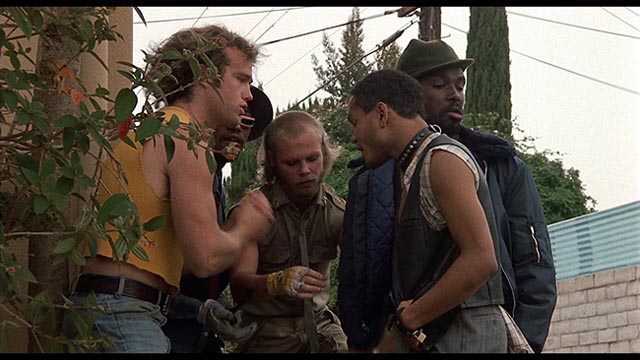
Death Wish was viewed as a reprehensible reactionary fantasy of white middle class violence visited on all the elements of society despised by that class. (I have never read Brian Garfield’s novel, but apparently it was intended as a critique of the attitudes which the movie is considered to embrace wholeheartedly.) After his wife and daughter are brutally attacked by three young punks, architect Paul Kersey (Charles Bronson) expresses his grief and anger by trolling New York City for muggers and junkies, whom he lures and then kills. The cops gradually close in, but by the time they figure out who this vigilante is, he’s become a popular hero and crime rates are declining … so he gets away with all his murders.
Eight years passed before the release of Death Wish II, also directed by Winner. In this one, Kersey is now living in Los Angeles where he’s working on a prestigious building project. His wife is long dead, but his daughter lives in an institution in a state of virtual catatonia. When Kersey runs afoul of a local gang, they invade his home, killing the maid and kidnapping his daughter who’s visiting. After she’s raped again and killed, he takes his gun out of its box and wreaks vengeance once again. The New York police take note and send the original detective on the case, Frank Ochoa (Vincent Gardenia), to L.A. in hopes that he’ll be able to conceal the connection to the original NYC vigilante whom they allowed to escape.
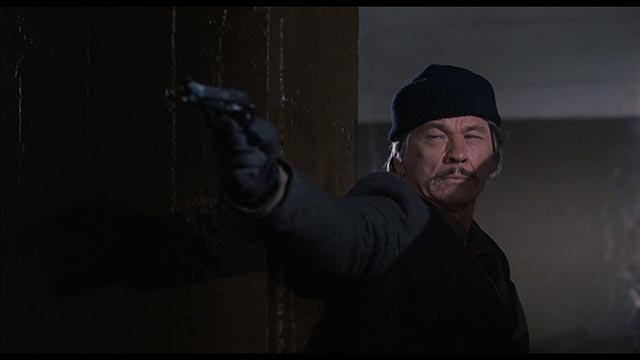
The original film was written by Wendell Mayes, a prestigious writer; the sequel was written by first-timer David Engelbach, who didn’t go on to much of a career. Winner runs efficiently through what is essentially a retread of Death Wish. The second sequel, imaginatively titled Death Wish 3 (1985: note the switch from Roman to Arabic numerals; is that an effort to “reimagine” the franchise or simply a lazy inattention to detail?), was written by Don Jakoby (as Michael Edmonds), better known for science fiction and horror (including one of my favourites, Tobe Hooper’s Lifeforce, co-written with Dan O’Bannon). In this one, Kersey returns to New York, where he drops in to visit an old friend in Brooklyn, only to find the old man terrorized by a large gang which is preying on all the poor residents of the neighbourhood tenements. When the old guy ends up dead, Kersey decides to wage war on the gang.
There are vague echoes of The Warriors in the gang, led by a colourful villain named Fraker (Irish actor Gavan O’Herlihy). The main interest this time is actually the location, an area of the city which looks like a bombed-out war zone, reminiscent of the locations used by Michael Wadleigh for Wolfen (1981). The movie takes full advantage of the idea that decent people are indeed caught up in urban warfare and Kersey eventually wields a very big machine gun and a rocket launcher. You’d think this would get him in trouble, but he’s actually already been spotted by the cops and they make use of his special abilities to clean up the neighbourhood – the forces of law are powerless, apparently, and it takes a dedicated freelancer to get things rolling (in the early years of Rudy Giuliani’s reign as mayor).
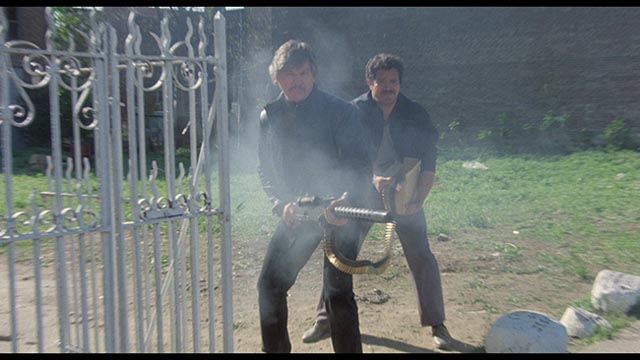
Neither of the sequels have the single-minded focus of the original film, which for all its dubious political point-of-view, did manage to express the anger and frustration of a segment of society which felt powerless against forces unleashed by social decay. The action in II and 3 is more overwrought, slipping towards the cartoonish – in fact, when Bronson breaks out the machine gun and rocket launcher, the third film tips over into mockery of its audience. Bronson remains the same rather inexpressive figure, but the original unrelentingly grim tone has evolved into the familiar violence-is-fun approach of ’80s action films. The mayhem grows bigger but the stakes are diminished.
But there’s one other key difference between the original and the sequels: in the former, after the attack on Kersey’s family, we never again see the three punks. In fact, the cops tell Kersey chances are they will never be identified and caught. Kersey’s vigilantism is directed at the concept of insecurity, not at those who have specifically wronged him and his family. But in both Winner’s sequels, he is fighting against just those who have caused personal injury to him, his family and friends. These movies are not about the generalized paranoia felt by people living in a diffuse, multi-ethnic society; they are narrowed down to mere personal revenge … and in this, they conform more clearly than the original to the political criticism leveled against Death Wish. While in both II and 3 Winner handles the action efficiently, there’s little of the sense of commitment which so unsettled critics of the original … in fact, the impersonality of the sequels probably retrospectively justified dismissal of the director’s earlier work.
Which brings us to the fourth movie in the series, Death Wish: The Crackdown (1987), written by Gail Morgan Hickman, most of whose credits are on television series, and directed by J. Lee Thompson – a sad case; having made some fine British films in the ’50s, moving on to the States and big international productions in the ’60s, he eventually became something of an anonymous hack in the last fifteen years of his career, devoting most of his time to a long string of Bronson action movies, with Death Wish 4 coming towards the end.
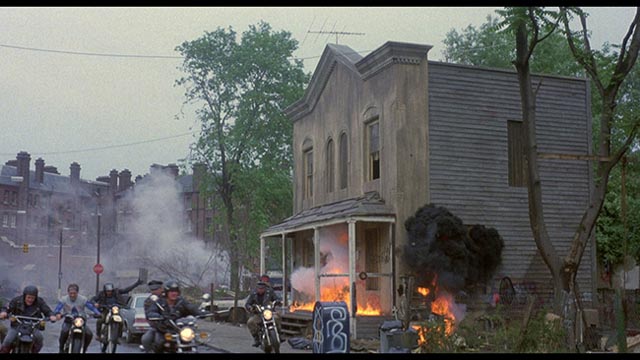
Perhaps it’s not surprising that the formula couldn’t be sustained, but this sequel has little to do with the previous three movies other than its use of the name Paul Kersey for Bronson’s character. It actually has more in common with another Michael Winner/Charles Bronson movie, the superior The Mechanic (1972). After Kersey’s girlfriend’s daughter dies of a drug overdose and no one seems to be doing anything about the scourge, Kersey is called in for a meeting with a wealthy man who offers him money to go after and destroy the drug cartels laying waste to Los Angeles. This is because the guy, Nathan White (John P. Ryan), knows Kersey’s vigilante history and figures he’s the man for the job … all pretense that the character is an architect driven to violence by anger and grief goes out the window. He’s now a hit-man for hire and, Yojimbo-like, he plays the gangs off against each other, realizing much too late that White has played him, using him to eliminate the competition before taking over the city himself.
This has so little connection to the previous three movies that it really feels as if Cannon Films had an old generic script lying around the office and someone just suggested that they change the lead character’s name to Paul Kersey and retitle it Death Wish. Just two years from the end of his directing career (with only two more Bronson movies to come), Thompson is unable to muster any kind of energy or interest. The movie goes through its generic motions, tossing in the obligatory action scenes at regular intervals, but there’s little excitement even at the most basic level. Bronson, taciturn at the best of times, is here just a cipher.
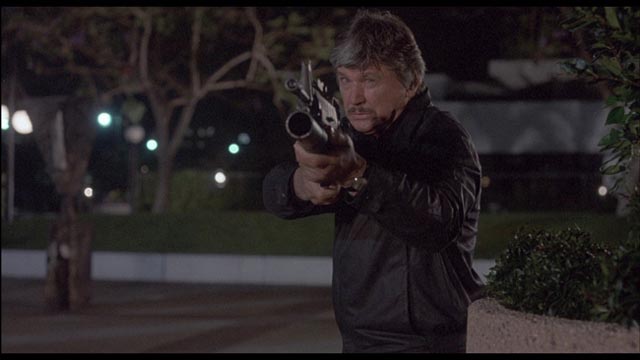
In these three movies, we catch a glimpse of the progression of commercial action across two decades, from a time when the mainstream was loosening the constraints on violence, allowing filmmakers to depict previously unacceptable levels of brutality, a development which many found unsettling and distasteful (a lot of critics were appalled by Bonnie and Clyde and The Wild Bunch). In the ’70s this violence did often play to the audience’s darker tendencies, with movies like Dirty Harry (1971), Straw Dogs (also 1971) and the first Death Wish condemned as dangerously Right-wing fantasies of (white) masculine power. But these films also engaged with the violence, connecting the viewer emotionally to the on-screen mayhem; they raised questions even as they appealed to our atavistic tendencies.
By the time of Death Wish: The Crackdown there wasn’t much in the way of a political or philosophical subtext left – movies like this merely reiterated familiar plot and character tropes, dictated by their position within a commercial genre which made few demands on the filmmakers or their audiences alike. They had evolved into mere displays of the mechanics of spectacle. The earlier films still have the power to engage and unsettle; these later ones simply bore.
*
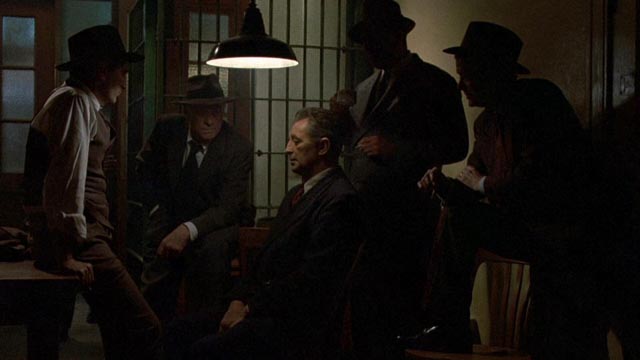
Although I had seen quite a few of Michael Winner’s movies back in the ’70s, I didn’t form any particular opinion about him until I saw The System (1964) ten years ago (on a DVD in Odeon’s Best of British Collection; released in the States two years later by VCI as The Girl-Getters). That film was so good that I became interested in re-seeing the Winner films I’d watched in theatres years earlier and in catching up with others I hadn’t yet seen. When West 11 (1963) was released on DVD three years ago, my interest was reinforced. Winner had apparently been a talented director back in his early British days (though I still haven’t seen You Must Be Joking [1965], The Jokers and I’ll Never Forget What’s’isname [both 1967]). My previous experience was with the movies of his American period, during which a rather un-English interest in violence was unleashed.
After beginning with a pair of fine westerns (Lawman [1971] and Chato’s Land [1972]) – with a brief detour to inject sex and violence into the refined world of Henry James’ A Turn of the Screw with The Nightcomers (1971), an entertainingly tawdry assault on tasteful literature – Winner made four movies in three years (three starring Charles Bronson), all contemporary thrillers, culminating in his biggest hit, Death Wish (immediately followed by the disastrous Won Ton Ton: The Dog That Saved Hollywood [1976], which Winner explained as a return to his comedy roots).
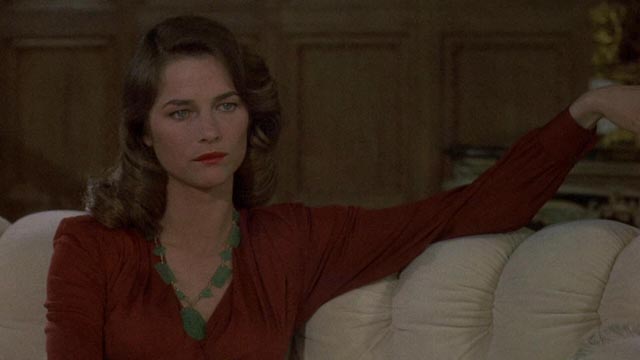
Although he continued to make movies for twenty-four years after Death Wish, Winner never made another comparable splash. The Sentinel (1977) was generally condemned as a tasteless Exorcist/Omen rip-off (it’s actually better than that), and the Death Wish sequels as mentioned above exhaust the vigilante theme (although number 3 does exhibit an amusing self-consciousness about the absurdity of turning architect Paul Kersey into an urban superhero). Probably his most interesting film in the years following Death Wish was his Raymond Chandler adaptation (and Howard Hawks remake), The Big Sleep (1978), recently released by Shout Factory on a double-feature Blu-ray along with Dick Richards’ Farewell, My Lovely (1975). Watching this pair of detective noirs back to back is an odd and disorienting experience, illustrating the challenges of making detective movies in a post-Watergate environment.
The ’70s saw some striking revisions of the genre. The traditional detective story, even with flawed protagonists, was generally about exposing secrets and restoring (at least temporarily) some kind of balance in a relatively stable world. That stability had been stripped away by the upheavals of the ’60s and the political crimes of the early ’70s. More often than not these new detectives, in following clues to what at first seems a straightforward mystery, find themselves in over their heads; they may manage to get fragmentary glimpses of the truth, but that hard-won knowledge leaves them shattered – think of the two Harrys played by Gene Hackman in The Conversation (1974) and Night Moves (1975) who end up destroyed psychologically (in the first) and physically (in the second); or Hickey (Bill Cosby) and Boggs (Robert Culp) whose investigation ends up leaving a trail of corpses and a sense of nihilistic despair; or The Long Goodbye (1973), in which Chandler’s Philip Marlowe (Elliott Gould) is so laid back that he can barely muster the energy to investigate anything, an attitude which makes him vulnerable to manipulation by old friend Terry Lennox (Jim Bouton), again resulting in a number of deaths.
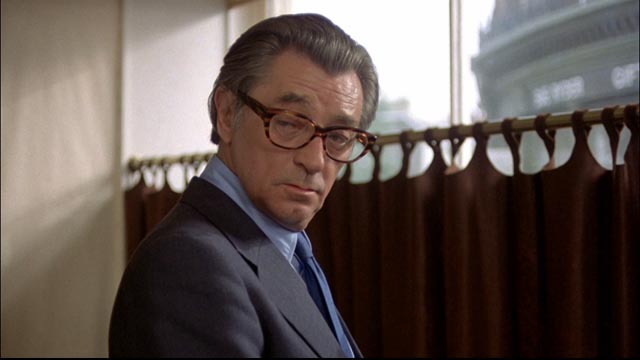
Perhaps the most relevant ’70s detective movie in relation to Farewell, My Lovely and The Big Sleep is Robert Towne and Roman Polanski’s Chinatown (1974), the film which most perfectly weds modern cynicism about politics and personal corruption with the classic milieu of the hardboiled heroes of Hammett and Chandler. Executive producer Elliott Kastner’s decision to revive Chandler’s Philip Marlowe was no doubt influenced by the success of Chinatown, and Farewell, My Lovely works overtime to recreate the atmosphere of the ’40s as perceived through a filter of memories shaped by Hollywood. Production designer Dean Tavoularis layers on the period detail while cinematographer John A. Alonzo (who had shot Chinatown the previous year) provides saturated colours and atmospheric shadows to evoke the fatalistic mood of film noir. And to cap it off, Robert Mitchum is on hand to give the whole thing a stamp of authenticity.
But that’s actually the one thing that’s missing. Although efficiently directed by Dick Richards, a minor figure with a relatively short career, Farewell, My Lovely comes across as pastiche, a simulacrum which resembles a beloved genre but somehow lacks much of the pleasure we get from this kind of movie. On its release, critics were very positive and it was a modest success, and yet it was three years before Kastner decided to make a follow-up. Beyond that delay, things got rather bizarre because, although Mitchum returned as Marlowe, The Big Sleep was transposed to England and set in the present day … as sequels go, this is one of the most nonsensical ever. But that turns out to be what makes the movie interesting.
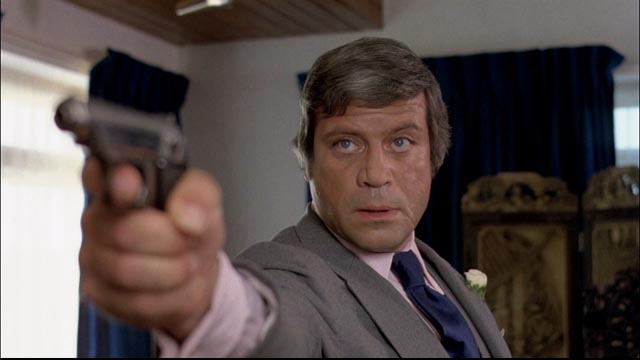
Reversing Robert Towne’s strategy in Chinatown of introducing a contemporary sensibility into a period mystery, writer-director Michael Winner brings a period detective into a contemporary milieu. Marlowe, a former U.S. soldier who stayed on in England after the war, has set himself up as a private eye in London; he’s friends with Scotland Yard’s Inspector Jim Carson (John Mills), who doesn’t seem too concerned with Marlowe’s use of a gun and helpfully keeps the PI informed as the case gets complicated and the bodies start to pile up.
Marlowe is hired by the aging and ailing General Sternwood (James Stewart) to deal with a little blackmail matter which involves the General’s younger daughter, the uncontrollable Camilla (Candy Clark). The older daughter, Charlotte (Sarah Miles), tries some seductive techniques to find out what Marlowe is up to, but he’s not falling for it. It turns out that Camilla has got herself involved with a pornographer (who quickly ends up dead). There’s a blackmail ring run by a homosexual rare book dealer, a vicious gangster who wants to protect his illicit business interests, and several murders … all climaxing with a revelation about the dark side of Camilla concealed beneath her wild party persona.
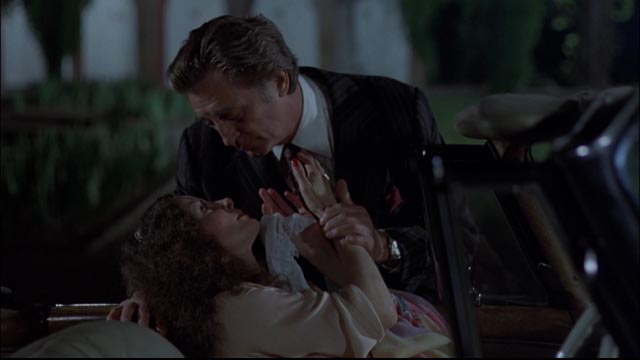
There’s something absurd about dropping Mitchum’s classical detective into the middle of all this modern sleaze, but Winner handles the complicated plot mechanics with breezy assurance, and he’s packed the movie with a great cast – Richard Boone as a sadistic enforcer, Oliver Reed as the gangster, Mills as the unflappable cop and Stewart as the old man driven to exhaustion by his offspring. Then there are Edward Fox, Joan Collins, Harry Andrews, Colin Blakely, Richard Todd, James Donald, John Justin … and if Sarah Miles and Candy Clark seem like an implausible pair of sisters, they do give vivid performances. One of Winner’s strengths was his handling of large ensemble casts, and it serves him well here even if the film itself is as implausible as those sisters.
The Big Sleep indicates that Winner didn’t take himself too seriously as a filmmaker, and yet was obviously amused by the whole process of make-believe. You can sense him having fun behind the camera and the movie is entertaining even if you don’t believe it for a minute.
Comments